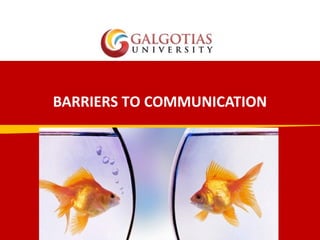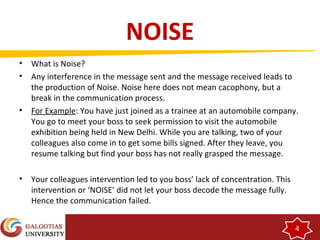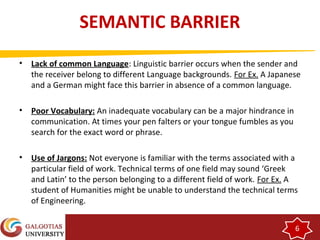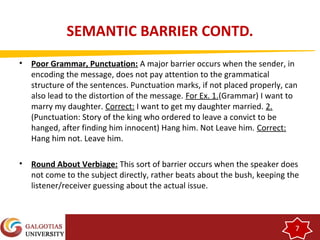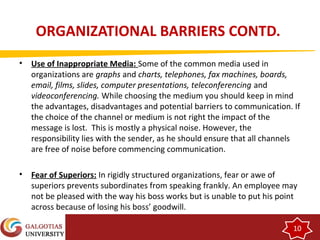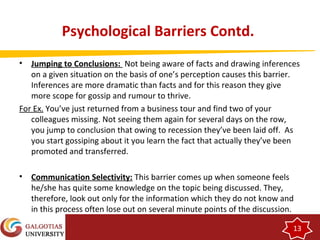This document discusses various barriers to effective communication. It identifies 5 main types of barriers: noise, semantic barriers, organizational barriers, psychological barriers, and other barriers. Noise can be physical (external distractions) or psychological (internal distractions that prevent focus). Semantic barriers involve issues with common language, vocabulary, jargon, grammar and clarity. Organizational barriers include inefficient communication chains, inappropriate media use, and fear of superiors. Psychological barriers involve assumptions, perceptions, resistance to change, and selectivity. Other barriers include cultural differences, poor listening skills, conflicting information, and incongruity between verbal and nonverbal messages. The document provides examples and explanations for each type of barrier.
